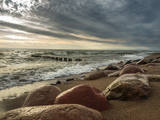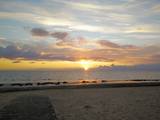Neibāde
Neibāde (latviski: jaunā peldvieta) dibināta 1823. gadā, kad Bīriņu muižas īpašnieka grāfa Ludviga Augusta fon Mellina znots Kārlis fon Reiterns – uz ziemeļiem no Pēterupes uzcēla pirmās vasarnīcas. 1835.gadā no Kārļa fon Reiterna šo kūrortu nopirka viņa svainis, Aleksis I. Gērans Pistolkorss. Šeit Pistolkorsu dzimta darbojās četrās paaudzēs, līdz pat 1918. gadam. Šajā laikā Neibādē tika izveidoti divi Bīriņu baronu atpūtas kompleksi: „Kuhrhaus” un „Strand”. Neibāde bija Pēterupes ciema vasarnīcu rajons jeb “kungu gals”. Līdz Pirmajam pasaules karam Neibādē uzturējās augstdzimuši atpūtnieki no Pēterburgas, Maskavas, Tērbatas un citām Krievijas impērijas vietām, kā arī Ziemeļvidzemes muižnieki.
Laikam ejot, Bīriņu zemes īpašnieki Pistolkorsi bija spiesti pārdot zemes gabalus. 19. gadsimta beigās Neibādē jau bija desmitiem skaistu vasarnīcu, kuru īpašnieki bija grāfs Ernests fon Kampenhauzens, firsts Pauls fon Līvens, baroni Adass, Frīdrihs fon Volfs, Reinholds fon Klots, Ulrihs u.c
No 1908.gada kūrorta atpūtnieku rīcībā bija arī tvaikonis „Neibāde”, kas veda viesus no Rīgas uz Neibādi un atpakaļ.
| Tourism objects involved in this story | ||
|---|---|---|
Historians say that the Livs or Livonians lived in the territory of Latvia long ago, starting in the 10th century. They populated Northern Kurzeme and the river banks of the Daugava and Gauja rivers. They asked the first German tradesmen who appeared in the area about the price of textiles at the market in Visby. This means that they were familiar with the island of Gotland. The Livonians were courageous and spiritually strong seafarers, because only strong men can live with the sea, go fishing and seal trapping, and take root in the by no means fertile sands of the seashore. The territory between Ģipka and Ovīši is known as the Livonian coastline. There are still romantic seashore fishing villages of Livonian origin, as well as Cape Kolka, where the great Latvian activist Krišjānis Valdemārs insisted that it was the centre of Europe. Livonians all along the seashore responded to his call by taking part in building sailing ships all the way up to Ainaži, where there was a maritime school. That allowed the ships to sail to the far corners of the world, thus creating a century of sailing ships. This wasn’t possible without the Livonians. Also on the coastline are the oldest lighthouses in Latvia, with the one at Ovīši still serving as a star that shows the route for seaborne ships that are heading for Rīga. The Livonian heritage is also seen in the tradition of fishing for lamprey eels – something that is still very much in place in Carnikava, Svētciems and Salacgrīva. Old-time fishing equipment that cannot be seen anywhere else is on display in the latter town. The Latvian nation emerged when the Livonians flowed together with the Lettigalians, the Livonians joke. It may be that there is some truth in the anecdote. Liv or Livonian culture, lifestyles and history are closely linked to Latvia and cannot be separated from it. |
||
The largest town in the region dates back to the 19th century, when three local fishing villages – Neibāde, Pēterupe and Katrīnbāde – became a popular location for leisure and swimming. This led to the construction of many summer homes, and the development of the spa was facilitated by the opening of a rail line between Rīga and Saulkrasti in 1905. New spas and restaurants were opened, and the spa infrastructure was developed. During the summer there were various entertainments, including balls and concerts featuring orchestras from Rīga. Also facilitating the development of the spa was a road and railroad line between Rīga and Saulkrasti that were installed during the 1930s. During the Soviet occupation, leisure homes, sanatoriums and new summer homes were built in Saulkrasti, which was given the status of a city. Today Saulkrasti is attractive because of its white sand beach, as well as various annual events, the Saulriets trail, the White Dune, the unique bicycle museum, Sea Park, the “Centrs” swimming facility, Sun Square, etc. |
||













